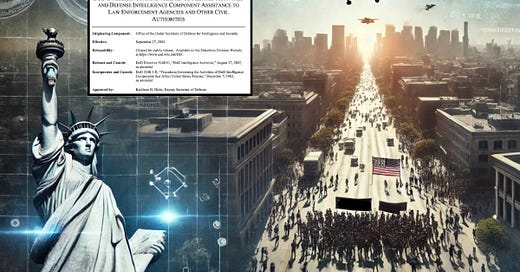DoD Directive 5240.01: The Stealth Expansion of Military Intelligence Powers in Life-or-Death Domestic Scenarios
As the U.S. nears a pivotal election, the quiet expansion of DoD Directive 5240.01 may grant military intelligence unprecedented authority to assist law enforcement in life-or-death domestic scenarios
10/24/24 Editor's Note: Refining the Comparison for a More Accurate Analysis
In our original report below, published on Oct. 7, we aimed to address claims circulating at the time that DoD Directive 5240.01 granted the military assassination powers against US citizens, which was not the case. We specifically debunked those assertions. However, as the topi…
Keep reading with a 7-day free trial
Subscribe to Sayer Ji's Substack to keep reading this post and get 7 days of free access to the full post archives.





